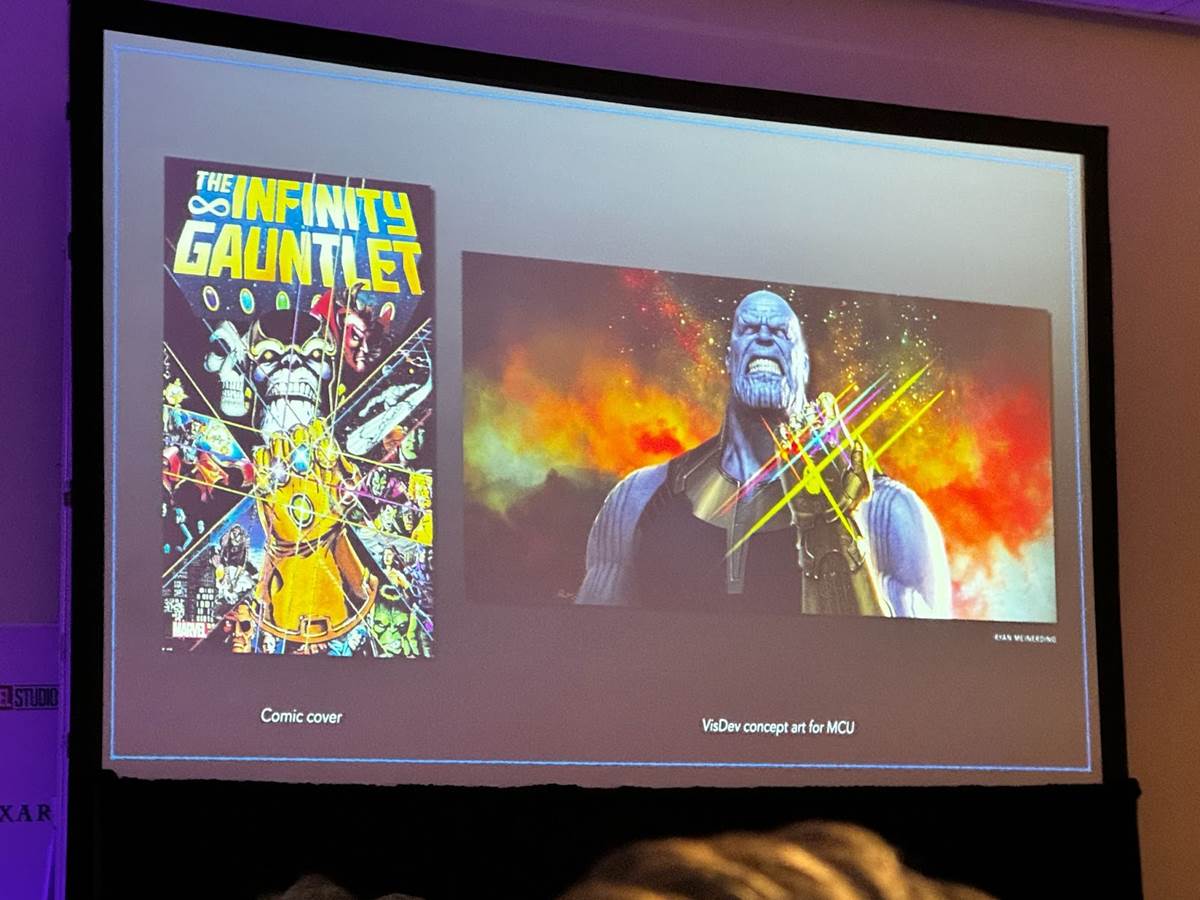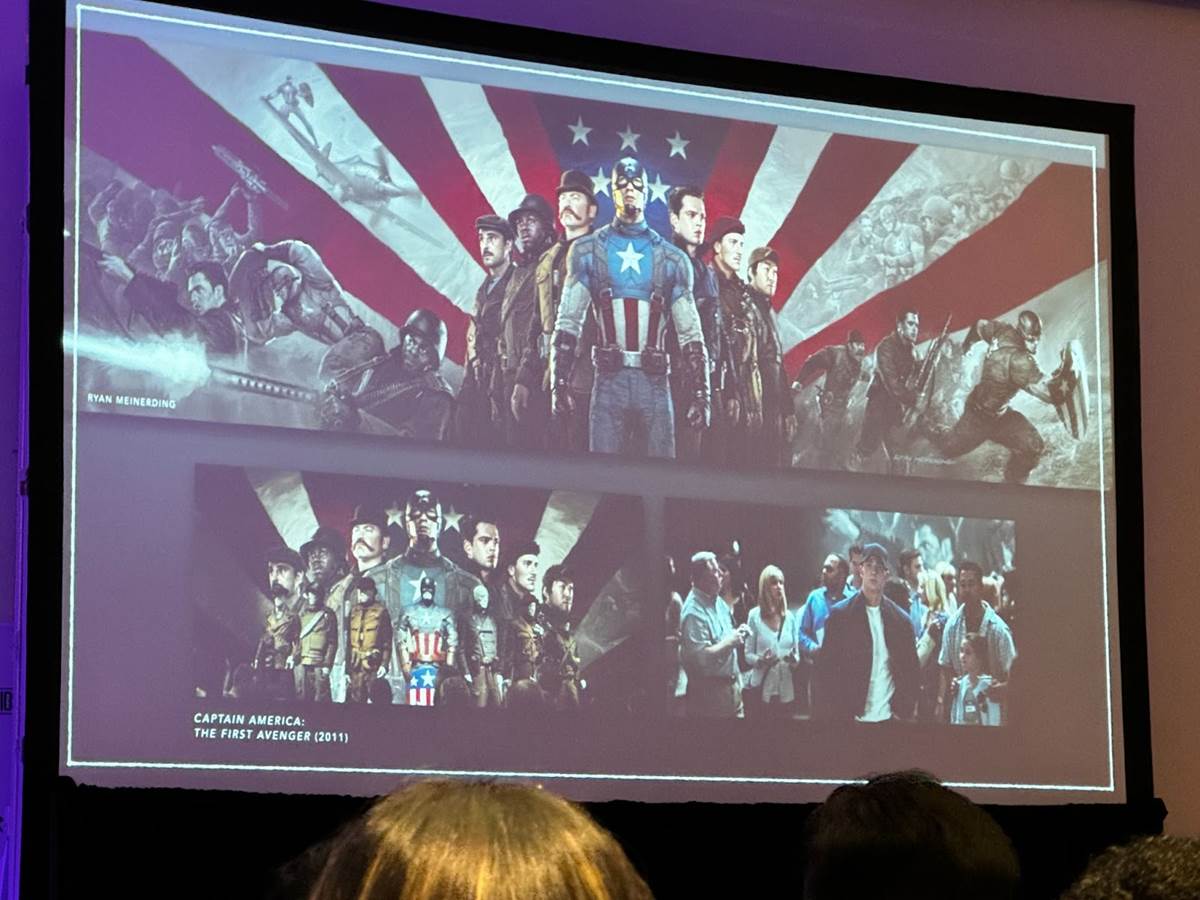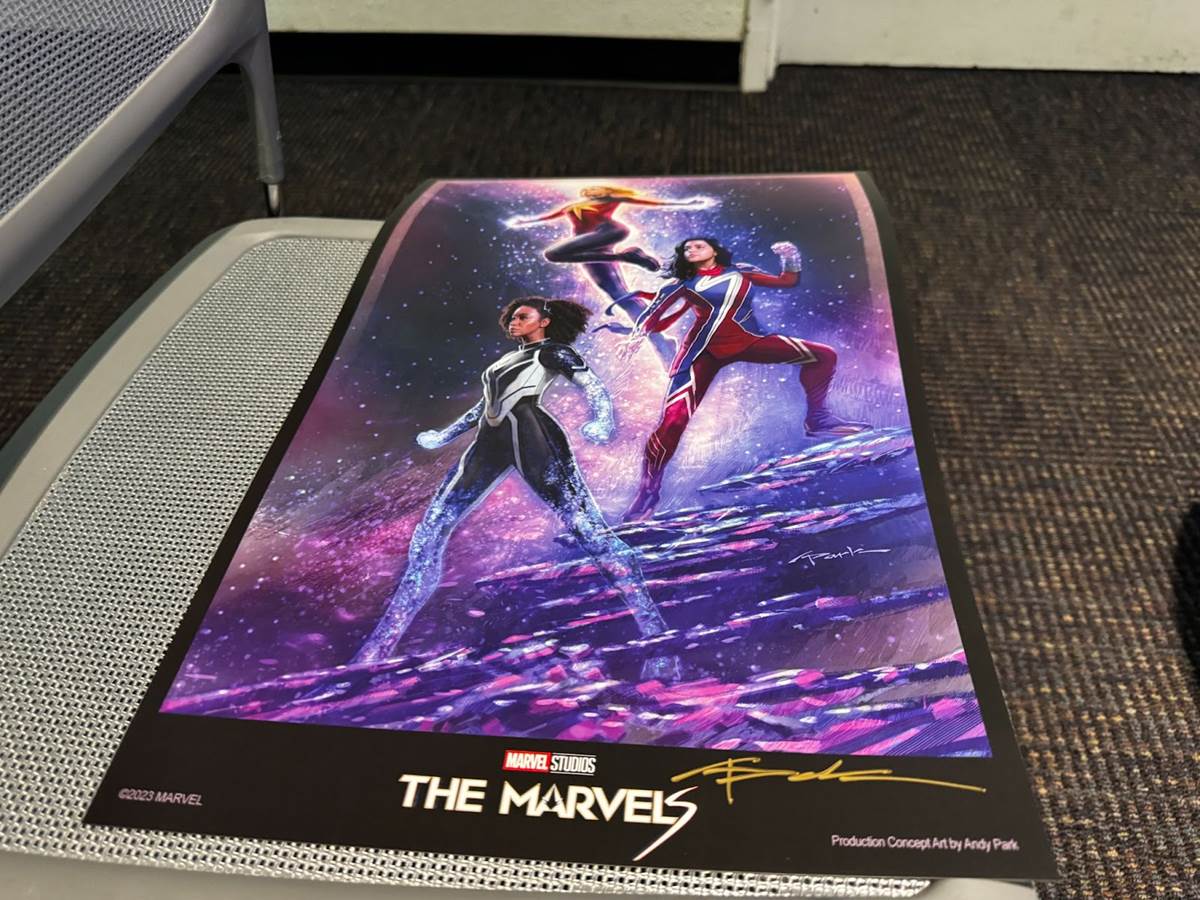With more than 80 years of Marvel Comics history to lean on, each new project from Marvel Studios offers a mix of the past, present, and future. At LightBox Expo, eight members of the Marvel Studios Visual Development team offered an insightful look at how they take heroes, villains, props, and powers from the pages of timeless comics and help bring them to the screen in live-action spectacles. The panel was moderated by Marvel Studios Visual Development Manager Holly Myer, with participants including Ian Joyner (Visual Development Supervisor), Jackson Sze (Visual Development Supervisor), Andy Park (Director of Visual Development), Ryan Meinerding (Head of Visual Development), Rodney Fuentebella (Visual Development Supervisor), and Jana Schirmer (Visual Development Supervisor).
Visual development artists are often among the first people brought in on any Marvel Studios project. Sometimes there isn’t even a script yet, just an assignment to explore what a comic book character could look like in a live-action environment. Development is an iterative process, with artists producing as many as 300 different variations on a character before a look is given the green light.
Keyframes are graphic depictions of important cinematic moments, often done as early exploration before a script is written. They also become a visual reference for both the filmmakers and post-production visual effects artists once the story is outlined. These keyframes typically take an artist about two weeks to complete, and they often become some of the most iconic pieces of the process. They typically grace the covers and multi-page spreads in Marvel Studios’ art books, and sometimes even get used in merchandise.
While the work of a visual development artist isn’t often seen on-screen in the final film or show, there are a few exceptions. Artwork created for Captain Marvel adorns the walls of Kamala Khan’s bedroom in Ms. Marvel (and The Marvels, now playing in theaters). But the most famous example is the Smithsonian exhibit devoted to Captain America, featured in both Captain America: The Winter Soldier and the Disney+ series The Falcon and the Winter Soldier. But no matter what film or show you watch, some visual development art flips by in the opening fanfare of every new Marvel Studios release.
It takes a mighty team to bring any Marvel story to life. As integral as visual development art is to the process, it’s actually a small team of artists in the department. Thankfully, it’s not a thankless job, with fans clamoring for their work in art books and convention prints (LightBox Expo attendees received a special poster for The Marvels that debuted at San Diego Comic-Con). They lean on the comic illustrators of the past while also putting their own unique stamp on each character or item created. They get to have a lot of fun with the assignments, like creating a robot version of Marvel Studios President Kevin Feige (in She-Hulk: Attorney at Law), working with Walt Disney Imagineering on Marvel theme park designs, and bringing 3D versions of their creations home through highly detailed consumer products based on their designs.
Marvel Studios is busy, with Season 2 of Loki now streaming on Disney+, The Marvels in theaters, and Echo coming soon. The next time you see a hero, villain, prop, or power on screen, thank the visual development artists for helping to bring these images to your screens.
Click here for more coverage from LightBox Expo.



